Myopia (Nearsightedness)

Myopia is a refractive error where the person has NEAR vision without glasses, and their distance vision is blurry. Lenses that are thick on the edges and have a minus power will make the vision clear in the distance. It can be corrected with glasses, spherical contact lenses or LASIK.
Hyperopia (Farsightedness)

Farsightedness is a refractive error where the person has better "far vision" without glasses. Lenses that are thicker in the center and have plus power will make the vision clearer.
For younger patients, the lens inside of the eye can change shape and compensate for the farsightedness and still see clearly. But when that child goes to read, the lens must first change shape to compensate for the distance vision and then even more for reading. Because the lens has to focus so much, children with farsightedness may exhibit blurriness when reading, short attention spans, headaches, red eyes, and achy eyes.
Astigmatism

Astigmatism is a refractive error like nearsightedness or farsightedness, except with astigmatism, the vision is blurry at all distances. This is because the power in one meridian, say the horizontal, is different from the vertical or opposite direction. If you consider a football, the curve point to point is flatter, so it would have a weaker power, and the curve around the center is steeper, so it would have a stronger power. When light goes through a lens like that, there is not a single focal point of clarity. Astigmatism is very common and can be corrected either with glasses, toric contact lenses, or LASIK.
Presbyopia (Hardening of the Lens)
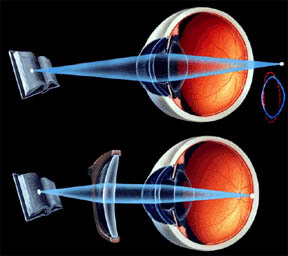
Hardening of the lens. As you age, the lens in your eye gradually hardens so that, sometime after your 40th birthday, you may find it more difficult to read. Normally, the lens inside of the eye will flatten for good distance vision and then become rounder to focus for reading. As the lens hardens, it does not change shape, so reading glasses with plus-power gives the eye the power it needs to see clearly. The change is most noticeable in the late 40’s and somewhat stabilizes in the early 50’s.
Cataract

Cataract The lens inside of the eye is normally clear. When it becomes unclear or cloudy, it is called a cataract. A cataract will cause the vision to become blurry and bright lights such as direct sunlight or on-coming headlights at night can cause glare and halos. Certain treatments on the eye glass lenses such as an anti-reflection coating or polarized lenses can decrease the glare. Cataracts can also cause the eyeglass prescription to change. Cataract surgery is recommended once the vision can no longer be sufficiently corrected with glasses or contacts.
Macular Degeneration
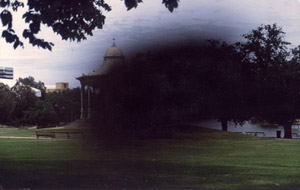
Macular Degeneration is a deterioration of the macula. The macula is the center part of the retina and is responsible for the clear, sharp central vision. The dry form of macular degeneration is the slow, progressive deterioration of the macula. The wet form is a complication of the dry form and it is when there are new blood vessels forming underneath the macula. The blood vessels form quickly and can leak fluid or bleed. They cause distortion and blurriness in the vision. There are effective treatments for the wet form of macular degeneration. So, if you notice new distortion or blurriness in their vision, you should call our office immediately. Low vision examinations are also very helpful for those patients whose vision has been affected by macular degeneration.
Glaucoma
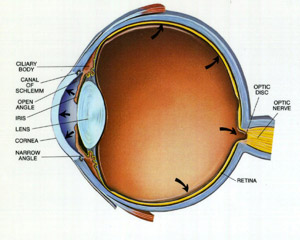
Glaucoma is a disease of the eye where the pressure inside of the eye is too high and it damages the optic nerve. Initially, when the damage is early, there is an imperceptible loss in peripheral vision. But, as the disease progresses, there can be a significant loss of peripheral or side vision. The good news is that we always check for glaucoma on every eye exam, looking at the intraocular pressure readings (average is between 8-22mmHg) the health of the optic nerve and the peripheral vision or field of vision test. If glaucoma damage is detected, then eye drops are prescribed to decrease the intraocular pressure and preserve the vision. Low vision examinations are also very helpful for those patients whose vision has been affected by glaucoma.
Diabetic Retinopathy
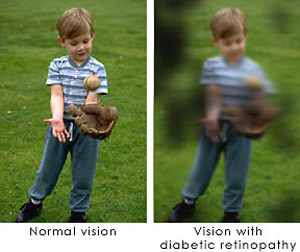
Diabetic Retinopathy is when the diabetes causes changes in the retina. The initial changes are at the capillary level, when the smallest of blood vessels balloon and can leak fluid or bleed. If this is in the macula, the center part of the retina that is responsible for your clear central vision, then the vision can become blurry if the condition is left untreated.
Many times treatment is easily tolerated and quite effective if it is caught early. As the disease progresses, more dramatic changes can occur such as new blood vessel growth which makes the eye at a much higher risk for internal bleeding and retina detachments. These changes are best treated by retina specialists. Low vision examinations are also very helpful for those patients whose vision has been affected by diabetes.
Dry Eye
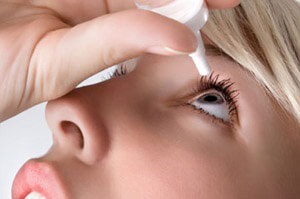
Dry Eye is a condition where the tears that normally cover the eye do not keep the eye moist. As a result, dry spots of exposed cornea will cause a variety of symptoms from tearing to dry, scratchy, burning, itchy, stinging eyes and blurry vision. Initial treatment can be as simple as frequent installation of artificial tear or lubricating eye drops.
Keratoconus

Keratoconus is a degenerative condition of the cornea where the central cornea becomes thin and the normal pressure inside of the eye causes the cornea to bulge forward. Because the bulge causes an irregular surface, clear vision is not always possible with glasses. Many times, all that is required to correct this condition is a specially-fit gas permeable contact lens, which can provide a smooth, regular surface to the cornea, which clears up the vision. Also on the horizon are new treatments designed to enhance the strength of the cornea and flatten the bulging area.









